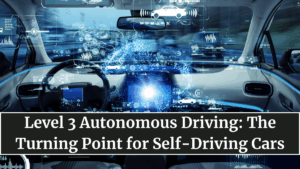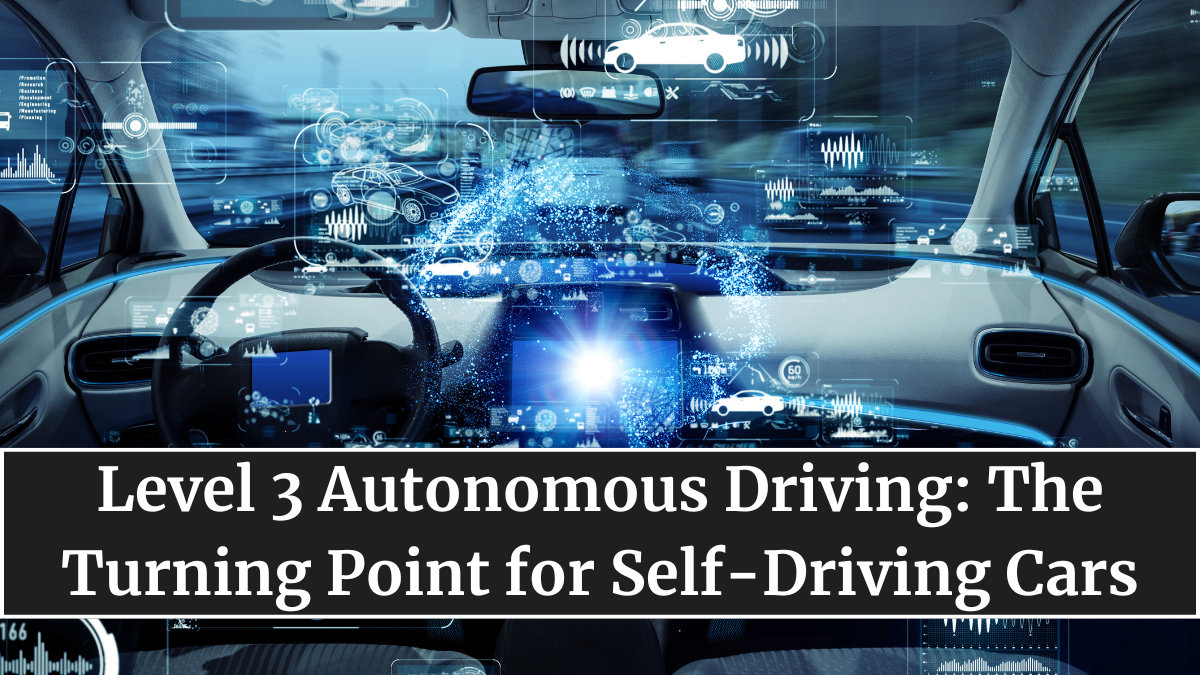The dream of self-driving cars is no longer science fiction — it’s quietly becoming reality. The autonomous driving Level 3 adoption wave marks a new chapter in the evolution of mobility, where vehicles don’t just assist drivers but can actually make driving decisions on their own. For the first time, cars can legally and safely drive themselves in certain conditions, letting the driver truly sit back — though not completely tune out.
After years of promise and testing, 2025 is shaping up to be the year Level 3 automation finally takes hold in production vehicles, reshaping both road safety and consumer expectations.

What Exactly Is Level 3 Autonomy?
To understand Level 3, it helps to look at the SAE (Society of Automotive Engineers) scale of vehicle autonomy:
| Level | Description | Driver Involvement |
|---|---|---|
| 0–2 | Driver assistance (cruise control, lane-keep) | Driver must remain in full control |
| 3 | Conditional automation (system drives, driver monitors) | Human can disengage under specific conditions |
| 4–5 | High to full automation | Vehicle can handle all scenarios without driver input |
Level 3 is the bridge between assisted and autonomous driving. The car can control steering, acceleration, braking, and monitoring traffic on its own, but expects the driver to intervene when prompted — such as in complex urban or unpredictable environments.
Key Automakers Leading the Level 3 Revolution
Several manufacturers are rolling out commercial Level 3 systems this year, each combining cutting-edge sensors, AI, and real-time mapping.
| Automaker | System Name | Launch Model | Key Capability |
|---|---|---|---|
| Mercedes-Benz | Drive Pilot | S-Class, EQS | First certified Level 3 system in the U.S. |
| BMW | Personal Pilot L3 | 7 Series | Highway automation up to 60 km/h |
| Honda | Sensing Elite | Legend Hybrid EX | Japan’s first approved Level 3 system |
| Audi | Traffic Jam Pilot | A8 L (2025 update) | Conditional self-drive in congestion |
| Tesla | Autopilot (upgraded) | Model S/X 2025 | Blending Level 2+ with upcoming Level 3 functions |
These automakers aren’t competing on horsepower anymore — they’re racing to perfect algorithms, sensors, and safety systems that define the future of autonomy.
How Level 3 Works on the Road
At its core, Level 3 autonomy relies on a powerful combination of:
-
LiDAR and radar sensors for 360-degree perception.
-
High-definition maps and GPS for lane precision.
-
AI-driven decision-making that predicts traffic movement.
-
Real-time data processing from onboard supercomputers.
In approved conditions — such as highways or low-speed traffic jams — the system takes over entirely. The driver can read, talk, or even stream entertainment, but must remain ready to retake control when the system requests it.
This balance between autonomy and human oversight defines the delicate transition we’re living through: the moment when cars begin to share control.
Benefits of Level 3 Adoption
The implications of this shift are profound:
-
Reduced driver fatigue: Perfect for long commutes or stop-and-go traffic.
-
Improved safety: Continuous sensor monitoring eliminates human distractions.
-
Optimized traffic flow: AI systems communicate with infrastructure for smoother movement.
-
Lower emissions: Adaptive driving patterns reduce idle time and fuel waste.
Most importantly, Level 3 technology is building trust among consumers — a critical milestone toward fully autonomous driving.
Challenges & Regulatory Roadblocks
Despite the optimism, Level 3 autonomy faces several challenges:
-
Legal uncertainty: Different countries define “driver responsibility” differently.
-
Liability concerns: Determining fault in accidents involving semi-autonomous cars remains unresolved.
-
Infrastructure readiness: Poor road markings or unpredictable traffic can confuse AI systems.
-
Cost: Adding LiDAR, sensors, and AI processors increases vehicle prices significantly.
Governments in the U.S., Europe, Japan, and South Korea are now drafting updated regulations to define safety, data handling, and accountability frameworks for this new era.
The Path Toward Level 4 and Beyond
Level 3 is only the midpoint. The next step, Level 4, will allow cars to operate independently in defined zones such as highways or smart cities — no driver intervention required. By 2030, experts expect mass adoption of Level 4 fleets for urban taxis and logistics vehicles.
Level 3’s success today will pave the way for that future. As cars learn, update, and communicate in real time, the human role will evolve from driver to supervisor — and eventually, to passenger.
The journey toward full autonomy isn’t a leap — it’s a series of intelligent steps, and Level 3 is the one where humanity finally lets go of the wheel, just a little.
FAQs
What does Level 3 autonomy mean?
It’s the stage where the car can drive itself under specific conditions, but the driver must be ready to take control when requested.
Which cars currently offer Level 3 driving?
Models from Mercedes-Benz, BMW, Honda, and Audi feature certified Level 3 systems, with more launches expected through 2025.
Is Level 3 driving legal everywhere?
Not yet. Approval varies by country and state, with California, Nevada, and Japan among the early adopters.
What are the safety advantages of Level 3 cars?
AI systems reduce human error, monitor surroundings constantly, and respond faster than human reflexes in predictable conditions.
What’s next after Level 3?
Level 4 and Level 5 autonomy, where vehicles can drive without any human involvement — leading to fully driverless transport ecosystems.
Click here to know more.
